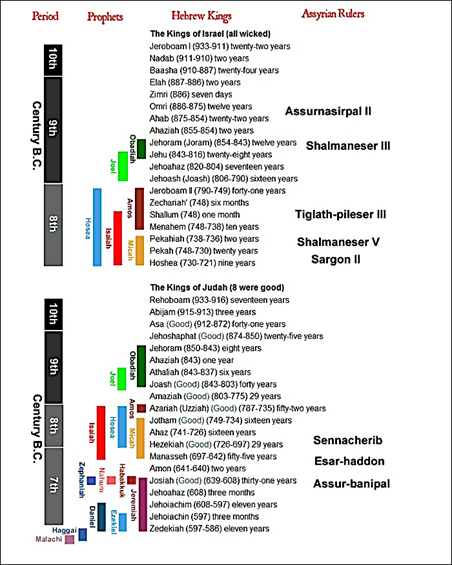Often in the Old Testament, the regnal dates of kings are recorded in a relative manner; for instance: And Nadab the son of Jeroboam began to reign over Israel in the second year of Asa king of Judah, and reigned over Israel two years. How can we know the absolute date of King Nadab’s reign based only on this information? The sad truth is we can’t, unless we have more correlated data. One of the Biblical archaeologist’s top 10 discoveries came in 1845–47, when Sir Austen Henry Layard made exploration and excavations among the Assyrian ruins of Nimrud and capital city Nineveh along the Tigris River. Among his most extensive treasure trove were ten cuneiform tablets (sample, right), listing consecutive years of Assyrian history tied to specific events and named after specific individuals. Known as the Assyrian Limmu list, it enables precise dating of Iron Age chronology for the kings of Assyria during the period of Israel’s kings. It is widely agreed upon as highly accurate by both Biblical and secular scholars alike.
listing consecutive years of Assyrian history tied to specific events and named after specific individuals. Known as the Assyrian Limmu list, it enables precise dating of Iron Age chronology for the kings of Assyria during the period of Israel’s kings. It is widely agreed upon as highly accurate by both Biblical and secular scholars alike.
The Assyrians were obsessed with precise records, large library collections, and astronomy. (Remember, these pagans worshiped the host of heaven.) The Limmu was a high-ranking government official appointed once at the beginning of each solar year to document important annual activities. Main events noted included military campaigns, plagues, and astronomical events, such as Limmu Bur-Sagale’s solar eclipse, which they saw in Assur around the mid-8th century. Using astronomy dating methods, that eclipse dates to June 15, 763 BC, enabling an accurate chronology between 858 to 699 BC, which can be tied to the Bible’s records. Coupled with the extensive “Assyrian King List” tablets, one can reliably date over 1,000 years of history as far back as 1,964 BC.
The chart below gives absolute dates for eight Assyrian kings, 39 Hebrew kings and 14 prophets. Can you find the one mistake (absence) in the chart? The first who tells me gets a pint of fresh blueberries!

Info sources: Baylor University, BiblicalArchaeology.com, Britannica.com and Livius.org. Chart (with mistake) from: Bible-History.com. Photo from Livius.
Like this? Consider sharing it to Facebook by clicking the linked icon below.
